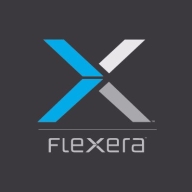

Flexera Cloud Management Platform and Morpheus are cloud management solutions. Users are more satisfied with the pricing and support of Flexera CMP, while Morpheus is preferred for its comprehensive feature set.
Features: Flexera CMP provides excellent visibility and tracking of cloud expenditure, offers integrations, and provides rich analytics. Morpheus is recognized for its comprehensive orchestration tools, multi-cloud governance, and self-service provisioning.
Room for Improvement: Flexera CMP could improve its deployment complexity, simplify its user interface, and expand its feature set for easier use. Morpheus could enhance its customer support responsiveness, improve certain integrations, and streamline some of its advanced features for users with less technical expertise.
Ease of Deployment and Customer Service: Flexera CMP involves a more complex deployment process but offers dependable customer support. Morpheus provides a simpler, user-friendly deployment approach with responsive customer service, making it suitable for quick implementation.
Pricing and ROI: Flexera CMP includes higher initial setup costs but delivers satisfactory ROI through its efficient cost management features. Morpheus offers competitive pricing with lower setup costs, providing significant ROI for businesses utilizing its full feature set.
| Product | Market Share (%) |
|---|---|
| Morpheus | 7.6% |
| Flexera Cloud Management Platform (CMP) | 2.1% |
| Other | 90.3% |

| Company Size | Count |
|---|---|
| Small Business | 5 |
| Midsize Enterprise | 2 |
| Large Enterprise | 3 |
Flexera Cloud Management Platform (CMP) offers comprehensive capabilities for managing cloud environments, enabling businesses to control costs, optimize resources, and ensure compliance across multiple cloud providers.
Flexera CMP is designed to streamline cloud management by providing a unified platform that supports automation, reporting, and policy enforcement. It empowers IT departments to efficiently manage multi-cloud environments by offering tools for workload optimization, visibility into cloud usage patterns, and governance features. Flexera CMP's integrations and customizable workflows enable seamless deployment and management of applications, reducing the complexity often associated with cloud operations.
What are the key features of Flexera CMP?Flexera CMP is particularly valuable for industries with complex IT environments such as finance, healthcare, and technology, where effective cloud management is critical to maintaining continuous operations. By leveraging Flexera CMP, these industries can optimize their cloud strategies, balance workloads efficiently, and ensure data security and compliance, thereby driving business transformation.
Morpheus is a 100% agnostic cloud management platform (CMP) designed from the ground up to unify management of multi-cloud and hybrid IT while empowering DevOps teams with self-service provisioning of bare metal, VM, and container-based application services.
We monitor all Cloud Management reviews to prevent fraudulent reviews and keep review quality high. We do not post reviews by company employees or direct competitors. We validate each review for authenticity via cross-reference with LinkedIn, and personal follow-up with the reviewer when necessary.